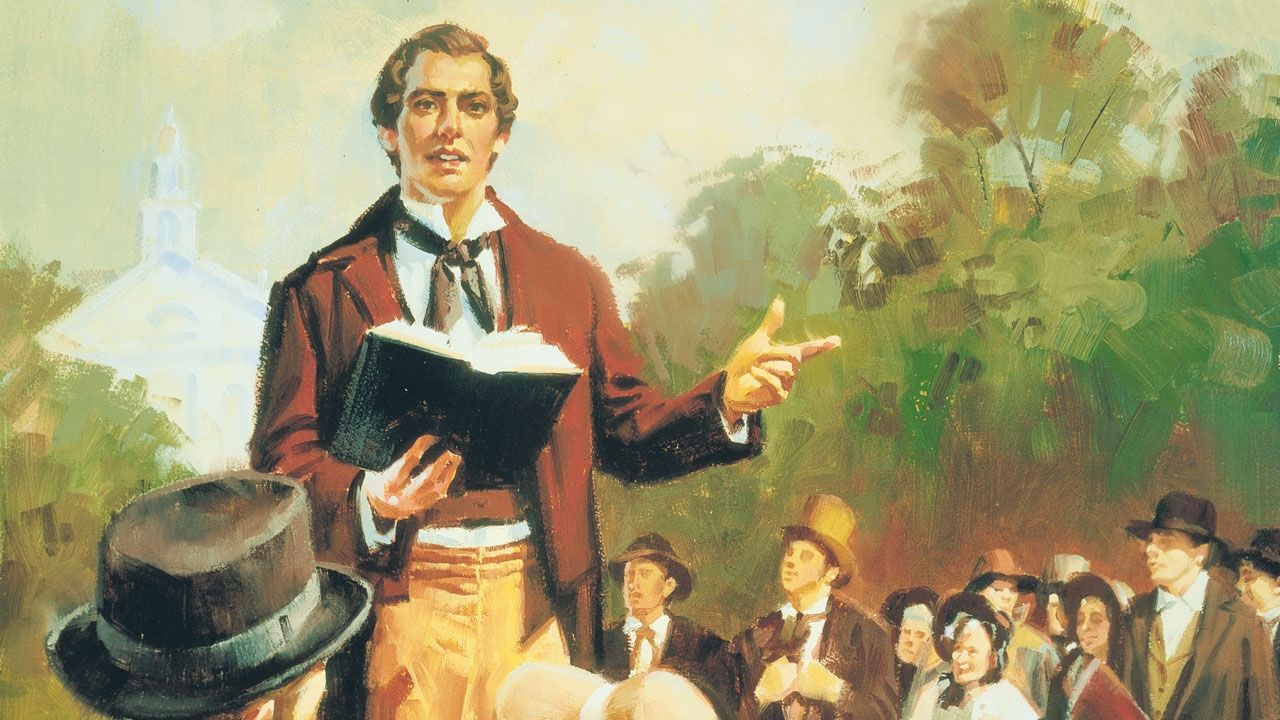
When it comes to questions about faith, it’s vital to approach the discussion with both honesty and context. The CES Letter, a well-known document critical of The Church of Jesus Christ of Latter-day Saints, raises numerous concerns about Joseph Smith’s prophetic role. Some of these Joseph Smith CES Letter arguments involve multiple First Vision accounts and changes to his revelations. However, when these issues are viewed in historical and doctrinal context, the criticisms largely dissolve. Here’s a closer look at how the CES Letter’s claims hold up under scrutiny.
Joseph Smith Gave Multiple Accounts of the First Vision
The CES Letter argues that Joseph Smith’s various First Vision accounts—four of which were written or dictated by him—are contradictory and therefore suspicious. Critics claim Joseph initially described seeing only one divine being, later “embellishing” the story to include two personages: God the Father and Jesus Christ.
The Historical Reality
Joseph Smith did record multiple accounts of the First Vision over a span of years, but this shouldn’t be surprising or suspicious. Each account was tailored to a different audience and recorded at different times, therefore emphasizing different aspects of the vision. This is entirely normal human behavior. Historians universally acknowledge that when someone recounts a personal experience multiple times, they naturally include or omit different details depending on context, audience, or personal reflection.
The CES Letter LDS points to the 1832 account, where Joseph mentions seeing “the Lord,” and claims that this disproves his later account of seeing two personages. However, the 1832 account can be reasonably read to refer to two divine beings—both of whom Joseph refers to as “the Lord” at different points. The text states: “The Lord opened the heavens upon me and I saw the Lord.” This parallels his 1835 account, where one divine personage appears first, followed by another.
In fact, three out of the four firsthand accounts explicitly mention two beings, and the language of the 1832 account does not rule this out. As Joseph gained spiritual maturity and became more comfortable sharing sacred experiences, he naturally offered greater detail.
Sacred Experiences Are Not PR Scripts
Sources like the Mormon CES Letter often forget Joseph was 14 years old at the time of the vision. The fact that Joseph didn’t immediately write it down isn’t unusual for a teenager with his level of education. Moreover, Joseph didn’t rush to publicize the vision. His earliest account came more than a decade later, when he likely began to see the broader significance of the event in hindsight. As a young boy, Joseph may have seen the vision primarily as a personal answer to prayer, not as the formal beginning of a global Restoration.
Historical Context Supports Joseph’s Account
The LDS CES Letter claims that there were no religious revivals in Palmyra in 1820, suggesting Joseph invented this part of his story. However, the Church’s Gospel Topics essay rebuts this with solid historical evidence. The area was a known hotbed of revivalism, often called the “burned-over district” by historians. Methodist preacher George Lane, whom Joseph may have heard speak, was active in the area during 1819–1820, and camp meetings were frequent.
So, does the First Vision have inconsistent accounts like the CES Letter says? No more than any other spiritual or historical event retold over time. Instead, what we see is a consistent core narrative enriched with additional detail and clarity as Joseph matured and better understood his calling.
Joseph Smith Changed and Edited His Revelations—Proof He Was Making It Up?
Joseph Smith CES Letter arguments criticize Joseph for making revisions to early revelations, implying these were attempts to rewrite doctrine or cover up errors.
Living Revelation: A Core Principle of the Restoration
According to the Ensign article “Great and Marvelous Are the Revelations of God,” the idea that revelation is ongoing has always been a fundamental doctrine of the Church. From the beginning, Latter-day Saints understood that revelation unfolds gradually, and that adjustments to written revelations reflected the Prophet’s continued access to divine instruction.
With this context, it’s clear that Joseph Smith was not “changing” God’s word to hide past mistakes, as the CES Letter PDF suggests. He was clarifying, expanding, and adapting the Lord’s instructions as new circumstances and greater light became available. As early as 1831, a Church conference officially authorized Joseph to correct “errors or mistakes” in the revelations by the Holy Spirit. This process was not hidden. It was approved by Church leadership and embraced by the Saints.
For example, Doctrine and Covenants Section 27 began with just five verses in 1830. Later that year, Joseph received further revelation expanding the section significantly to include deeper doctrinal content. Likewise, Section 107, which now outlines priesthood offices, was originally received before the office of Seventy had even been restored. When that office was revealed later, new verses were added to reflect the updated organization of the Church.
These are not the actions of someone covering their tracks—they are the natural results of a living Church led by continuing revelation.
Revelation Through Human Language
Joseph once described the difficulty of conveying God’s word through a “crooked, broken, scattered, and imperfect language” (D&C 1:24). As Church authority Elder Marlin K. Jensen explained, Joseph’s revelations were his best efforts to capture the voice of God, not a dictation process akin to a typewriter.
Faith in Action: The Saints’ Response
Early Saints didn’t see these revisions as suspicious. On the contrary, they saw them as proof of a living God guiding His Church. Stories from the early days of the Church show men and women willingly sacrificing their homes, families, and futures to obey commandments given in revelations, even when those revelations were updated or revised.
What the CES Letter Gets Wrong
Joseph Smith CES Letter arguments attempt to cast doubt on Joseph Smith by highlighting the human aspects of his prophetic ministry: his evolving language, delayed documentation, and adjustments to revelations. But with the right context, these are not signs of fraud. Instead, they are signs of a living, dynamic relationship with God.
Joseph Smith never claimed to be infallible. He stated plainly: “I never told you I was perfect; but there is no error in the revelations which I have taught.” (Ensign, Jan. 2013)
Critics may find satisfaction in pointing out what they see as inconsistencies. But for those who investigate other CES Letter debunking sources, a different picture may emerge—one of prophetic calling, spiritual growth, and divine guidance.

By Todd Noall, Source Expert
Todd Noall is an author and religious scholar at Mormonism Explained with a focus on the history and theology of religion.

Fact Checked by Mr. Kevin Prince, Source Expert
Kevin Prince is a religious scholar and host of the Gospel Learning Youtube channel. His channel has garnered over 41,000 subscribers and accumulated over 4.5 million views. Mr. Prince also created the Gospel Learning App, a reliable platform where individuals seeking truth can access trustworthy answers to religious questions from top educators worldwide.
About Mormonism Explained
Mormonism Explained is a resource that was designed to provide objective and factual information about Mormonism, its history, doctrines, and policies. Our team of researchers consults experts and primary sources to present factual information on a variety of topics relevant to the Mormon Church.
Tags
